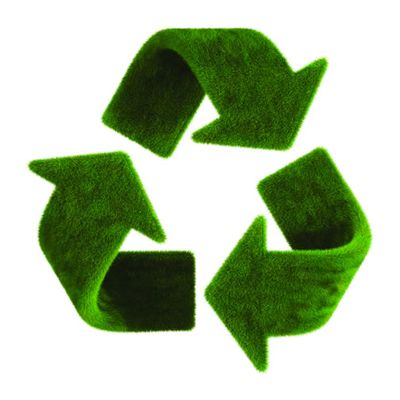Grasscycling For a Better Lawn

What if there was a way to improve your lawn, cut down mowing time and save money all at the same time? There is - it’s called grasscycling. And all you have to do is stop bagging grass clippings when you mow.
Improve Your Lawn
When you let clippings fall back into the lawn, they decompose and actually feed the grass.
- Grass clippings contain about four percent nitrogen, two percent potassium and one percent phosphorus. Research from the University of Missouri shows that grass clippings can supply 25 percent of a lawn’s total fertilizer needs.
- Grass clippings are about 90 percent water, so they decompose quickly. A study by the University of Connecticut found that the nitrogen from grass clippings shows up in the growing grass in as little as 2 weeks. By the end of the third year of the study, about one-third of the nitrogen found in grass came from previously recycled clippings.
While decomposing, clippings also serve as a food source for the good bacteria in the soil, which do many beneficial things for a healthy turf environment.
Some homeowners resist grasscycling because they are worried about creating thatch. In reality, thatch has nothing to do with grass clippings. Thatch is a mixed layer of undecomposed or partially decomposed grass roots, stems, crowns, runners and lower shoots between the soil surface and actively growing turf. Grass roots contain lignin, a substance that decomposes very slowly, and that’s what causes thatch.
Save Time
Dealing with bagged grass takes a lot of time. You have to stop mowing, empty the mower bag into another bag and then lug it to the curb. By not bagging, the Environmental Protection Agency (EPA) estimates you can cut your mowing time down by 38 percent. That’s a lot of time that you could be doing something else!
Save Money
Researchers at Michigan State University found that if lawn clippings are removed, turf requires at least two extra pounds of nitrogen for every 1,000 square feet. That means 20 to 30 percent more fertilizer needs to be applied if the lawn clippings are removed. So by mulching your grass clippings, you save 20 to 30 percent on your lawn care bill.
Best Practices
To have a healthy lawn, set your mower blades at a high setting. Cool-season grasses should be between two-and-a-half and three-and-a-half inches high. Warm-season grasses should be between one-and-a-half and two-and-a-half inches high. The EPA recommends that you mow frequently so that you remove nor more than one-third (about one inch) of the total grass height.
Is there ever a time you should bag clippings? If your lawn is diseased, removing clippings can help reduce the amount of disease organisms. And if your mower is unsafe to operate without a bagging attachment, collect the clippings and use them as mulch or compost.
Grasscycling also keeps millions of pounds of waste out of landfills. You can do a lot for your lawn and the environment just by doing less.